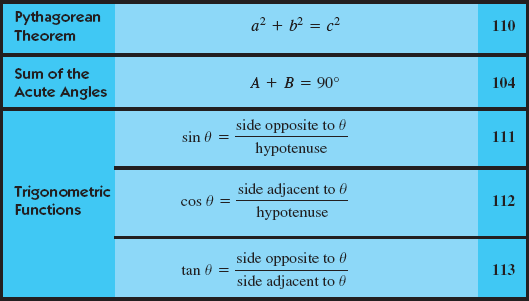7.2. Solving a Right Triangle
We will soon see that a great number of applications require us to solve a right triangle. It is an essential skill for technical work. Our tools for solving right triangles consist of the trigonometric functions just introduced and, from Chapter 6, the Pythagorean theorem and the fact that, for a right triangle, the sum of the two acute angles must be 90°.

7.2.1. Solving a Right Triangle When One Side and One Angle Are Known
To solve a triangle means to find all missing sides and angles (although in most practical problems we need find only one missing side or angle). We can solve any right triangle if (a) one side and one acute angle are known, or (b) two sides are known.
To solve a right triangle when one side and one angle are known,
Make a sketch, as in Fig. 7-10.
Find the missing angle by subtracting the given angle from 90°.
Relate the known side to one of the missing sides by one of the trigonometric functions. Solve for the missing side.
Repeat step 3 to find the second missing side.
Check your work with the Pythagorean theorem.
Figure 7.10. A right triangle. We will usually label a right triangle as shown here. We label the angles with capital letters A, B, and C, with C always the right angle. We label the sides with lowercase letters a, b, and c, with side a opposite angle A, side b opposite angle B, and side c (the hypotenuse) opposite ...
Get Technical Mathematics, Sixth Edition now with the O’Reilly learning platform.
O’Reilly members experience books, live events, courses curated by job role, and more from O’Reilly and nearly 200 top publishers.

